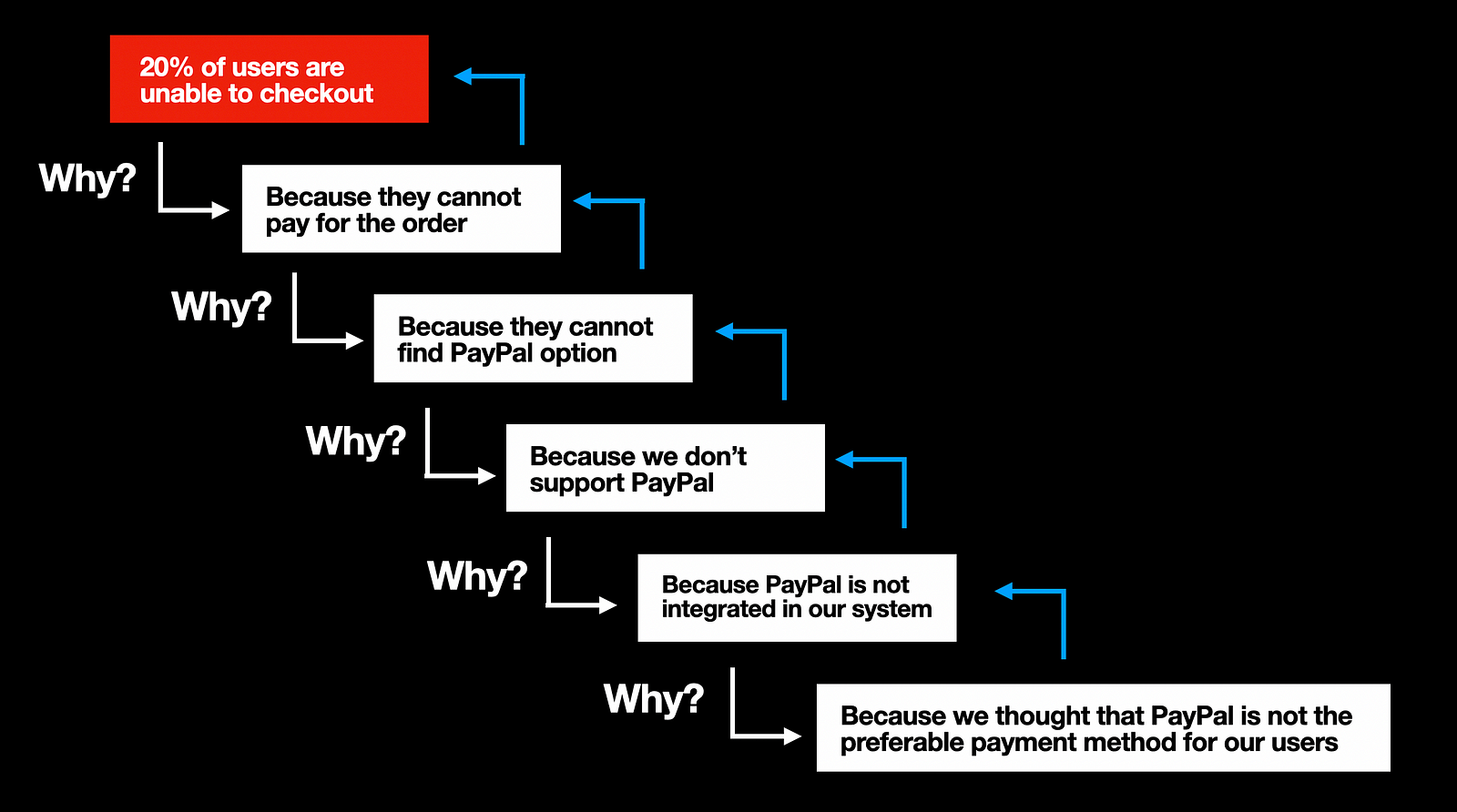The 5 Whys: How to make the most of this method

Sometimes things go wrong, and your product is not performing as expected. 5 Whys is an easy-to-use technique that will help you find the root cause of the problem. You ask, “Why?” Question 5 times to understand the true nature of the problem.
In this article, I want to discuss five tips that will help to make the most of using this technique.
1. Clearly articulate the problem you want to solve
The 5 Whys always starts with defining the problem. A problem is a specific unwelcome situation your business has to deal with. The better the problem is defined, the more chances you will find the correct root cause of the problem.
Write a problem statement with the following elements:
- Background of a problem. Add essential details that help to understand the conditions in which the problem occurred.
- The people affected by the problem. Which category of users is affected by this problem, and how large is this category of users?
- The impact of the problem on the organization. What will be the effect on the business if the problem is not fixed?

2. Ensure that you dive deep enough to get to the real root of the problem
Note that 5 is a rule of thumb. Sometimes you need to ask “Why” 3 times; sometimes, you must ask six times. You should dive deep enough to get to the real root of the problem, not just the symptoms. The risk of not digging deep enough is that you won’t find a real root cause of the problem and end up curing the symptoms.
The real root cause of the problem typically lies in product requirements and the design process you follow. In other words, what may first seem like a problem of your user or designers/developers responsible for creating a product, often ends up being a problem in the process your organization follows.
3. Always practice the 5 Whys with your team
The outcome of the 5 Whys is only as good as the knowledge & expertise of the people practicing it. That’s why you should make the 5 Whys a team exercise. Invite people who can be affected by the problem or can provide valuable insights about it.
4. Always validate the trial
Once you’ve got the answer to the final question, “Why?” it’s time to validate the trail you’ve created. You need to do that because team members might provide incorrect answers to Why questions, but when you read the trail from top to bottom, it will be hard to notice the logical inconsistencies. Fortunately, it is easy to validate the trail — all you need to do is to read it backward, line by line.
This approach will also help you find the gaps in the answers. For example, you can identify steps where you miss in-between answers.

5. Ensure that the problem worth solving
This one is very tricky. When you start investigating a problem, you might think it will be easy to fix. However, once you get to the root cause of the problem, you might see that the solution will be time-consuming and very expensive.

Does it always mean that you need to fix the problem? No.
You must always measure the value the solution brings to your business. Always prioritize problems in accordance with the business value, and try to solve the most critical problems first.
